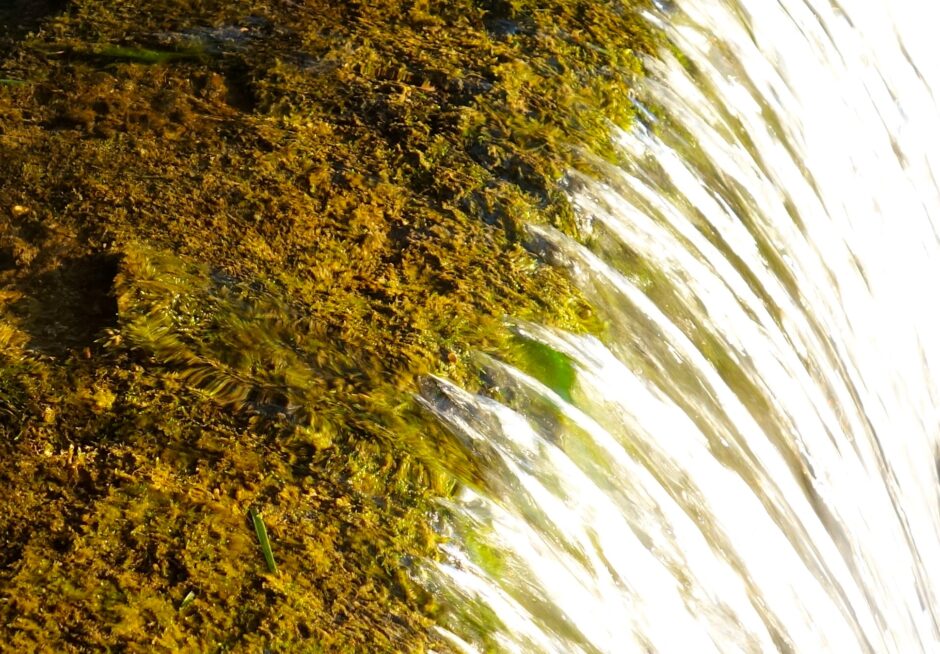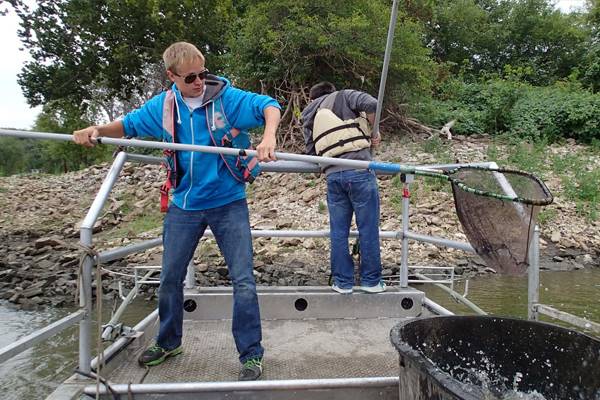Native Predators Control Asian Carp Populations in Illinois
 Flow at the Illinois River Watershed (Credit: Kevin Dooley via Flickr CC BY 2.0)
Flow at the Illinois River Watershed (Credit: Kevin Dooley via Flickr CC BY 2.0)Similar to round gobies in the Great Lakes, Asian carp in some parts of the U.S. have become the meal of choice for native predators. According to the U.S. Department of Agriculture, Asian carp is the name associated with a large group of invasive carp species: bighead carp, black carp, grass carp, and silver carp. Due to their size and behaviors, Invasive carp are more disruptive than the smaller goby. Adult Asian carp are large fish with voracious appetites that threaten native species by outcompeting native species for limited food and habitat.
Using Native Species to Control Invasive Carp
While adult invasive carp are too large for most freshwater predators to prey upon, their fry and eggs are popular choices for native fish. A study in the La Grange Reach of the Illinois River, run by scientists at Western Illinois University in collaboration with the U.S. Geological Survey, the Illinois Natural History Survey and the Upper Midwest Environmental Sciences Center, found that native fish species prey heavily on juvenile Asian carp.
In lakes and rivers that have been invaded, resource managers have spent a great deal of time and money trying to eliminate the threat of invasive carp. So reports that native predators may be able to reign invasive carp species in, unsurprisingly, prompted considerations of how this phenomenon could be capitalized as a control strategy. However, the strategy was found to be rather slow, limiting its effectiveness.
“It would be weird for something not to eat them, because there were millions of these fish,” said Cory Anderson, a former research assistant in the Department of Biological Sciences at Western Illinois University. But he stops short of recommending native fish predation as a method to control the carp. “It limits them to a point, but they grow so fast that they can only be eaten by our (native) fish for a short time. They flood the system and outgrow predators so quickly that it may only be useful for a short time.”
Conclusion
Many natural control strategies are known to have limited success due to the range and size of many invasive populations. As a result, resource managers have developed several strategies to control invasive populations without harming native populations. The goal of these strategies is not necessarily eradication but instead to limit the growth of the population.
Most resource managers believe that more direct interference is necessary in order to combat invasive carp, much like the strategies deployed against sea lamprey or round goby. Sea lamprey have been targeted through lampricides, a chemical toxin that is lethal to lamprey, preventing the continued spread of the species—though some have voiced concerns over how this toxin impacts native lamprey. In terms of round goby, prevention is the primary strategy deployed against the species as it is difficult to target the bottom-feeding fish specifically—fortunately, native predators in the Great Lakes have helped limit populations by eating the small fish. Similarly, invasive carp strategies involve a combination of targeted and preventative strategies, now including natural controls, thanks to local predators.

Researchers use nets to pull up fish on the Illinois River. (Credit: Cory Anderson)


0 comments